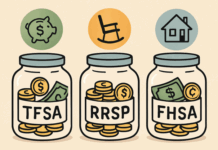If your business relies on the cloud, you’re not alone. But what often starts as a flexible, affordable solution can slowly turn into something harder to manage. Without the right systems in place, cloud bills pile up, services go unused, and nobody’s quite sure who approved what.
That’s where cloud cost optimization makes a real difference. It’s not just about paying less, but about making your setup work better for you. Keep reading to see how getting on top of your cloud spend can help your business stay lean and focused.
What Is Cloud Cost Optimisation?
Put simply, cloud cost optimisation means making sure you’re only paying for what you need, and that you’re using it in the smartest way possible. This could involve shutting down resources that aren’t doing anything, choosing better pricing plans, or rethinking how services are spread across teams.
It’s about finding out what’s working, what isn’t, and cleaning up the mess that often builds up over time. It’s not about minimising spend, but maximising the return on what you invest.
Why Enterprises Struggle Without a Strategy
For a lot of large organisations, cloud costs grow quickly because there’s no clear process. One team signs up for something, another adds a new service, and before long, nobody has a full view of what’s going on.
Finance teams often don’t have the insights they need, and IT teams are too busy to chase every small detail. That’s where tools like Vertice come in, bringing everything together so decisions are based on real data, not assumptions.
With this kind of visibility, you can manage cloud spend properly instead of reacting when something goes wrong.
Benefits of Cloud Cost Optimisation for Enterprises
Financial Efficiency
It’s not just about cutting back, but about spending better. When you know exactly what’s being used, you can avoid waste and focus your budget where it matters. You’re not guessing anymore. Instead, you’re making smart, informed decisions.
Better Resource Planning
Optimisation helps different departments work together. IT and finance get on the same page, and services are scaled to fit actual demand. That means fewer unused systems and more intentional use of what you already have. You also reduce your environmental load by powering down what you don’t need. It’s a win for the planet, too.
Improved Decision-Making
Once you’ve got the full picture, everything becomes easier. Procurement becomes smoother, renewals don’t sneak past unnoticed, and finance teams can plan more confidently. No more scrambling to make sense of last-minute invoices, just a clear view of what’s coming and where your money’s going.
Automated Controls and Governance
Manual tracking only gets you so far. With automation, you can set approval flows, receive alerts when usage changes, and handle renewals without stress. You’re not relying on memory or old spreadsheets anymore because your systems take care of it for you.
Efficiency Is a Competitive Advantage
Sorting out your cloud costs isn’t a one-off job, but something you build into how you work. And the businesses that do it well don’t just save money, but also gain control.
When your teams know exactly what they’re using and why, you make smarter choices and avoid surprises. If you haven’t reviewed your setup recently, now’s a good time to do it. Start where you are, clean up what’s not working, and move forward with clarity.
Find a Home-Based Business to Start-Up >>> Hundreds of Business Listings.















































